
Maori was a British refrigerated cargo steamship built in 1893 by C.S. Swan & Hunter of Wallsend-on-Tyne for Shaw, Saville & Albion Co. of London with intention of transporting frozen meat and produce from Australia and New Zealand to the United Kingdom. The vessel stayed on this trade route through her entire career. In August 1909 while on one of her regular trips, she was wrecked on the coast of South Africa with the loss of thirty two of her crew.

The SS Christopher Columbus was an American excursion liner on the Great Lakes, in service between 1893 and 1933. She was the only whaleback ship ever built for passenger service. The ship was designed by Alexander McDougall, the developer and promoter of the whaleback design.

SS Manchuria was a passenger and cargo liner launched 1903 for the San Francisco-trans Pacific service of the Pacific Mail Steamship Company. During World War I the ship was commissioned 25 April 1918–11 September 1919 for United States Navy service as USS Manchuria (ID-1633). After return to civilian service the ship was acquired by the Dollar Steamship Line in 1928 until that line suffered financial difficulties in 1938 and ownership of Manchuria was taken over by the United States Maritime Commission which chartered the ship to American President Lines which operated her as President Johnson. During World War II she operated as a War Shipping Administration transport with American President Lines its agent allocated to United States Army requirements. After World War II, she was returned to American President Lines, sold and renamed Santa Cruz. The liner was scrapped in Italy in 1952.

SS Ancona was an ocean liner, built in 1908 by Workman, Clark and Company of Belfast for the Societa di Navigazione a Vaporetti Italia of Genoa. She was an emigrant ship on a route between Italy and the United States. SM U-38 sank her on 8 November 1915 off the coast of Tunisia.
Stanbell was a 9,804 GRT tanker which was built by Sir J Laing & Sons, Sunderland in 1943 as Empire Beresford for the Ministry of War Transport. Postwar she was sold into merchant service and renamed Stanbell. She was converted to a bulk carrier and later sold to new owners and renamed Kelantan, serving until scrapped in 1965.
Hewsang was a 3,539 GRT cargo ship which was built by William Gray & Co Ltd, West Hartlepool in 1944 as Empire Bermuda for the Ministry of War Transport (MoWT). Postwar she was sold into merchant service and renamed Hewsang and later sold to new owners and renamed Sunshine, serving until scrapped in 1970.
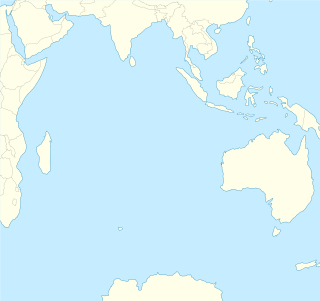
Gripfast was a 2,852 GRT coaster which was built in 1941 as Empire Brook for the Ministry of War Transport (MoWT). She was sold into civil service in 1946 and renamed Stancliffe. She ran aground in 1948 and was declared a constructive total loss, having broken her back. Despite this, she was repaired and saw further service as Gripfast, Capetan Costas P, Karine M and Pitsa before sinking when under tow on 6 December 1967.
Elisabethville was an 8,851 GRT ocean liner which was built in 1921 for Compagnie Belge Maritime du Congo. In 1930 the company became Compagnie Maritime Belge. She served the Antwerp - Matadi route.
Yelkenci was a 7,052 GRT refrigerated cargo ship which was built in 1943 for the Ministry of War Transport (MoWT) as Empire Camp. She was sold in 1946 and renamed Valacia. In 1951, she was sold and renamed New York City. A further sale in 1955 saw her renamed Loch Morar. A final sale to Turkish owners saw her renamed Yelkenci. She served with them until scrapped in 1971.
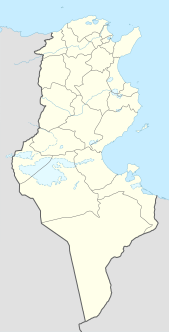
Almeria Lykes was a 7,773 GRT Type C3 cargo ship that was built in 1940 by Federal Shipbuilding and Drydock Company, Kearny, New Jersey for the Lykes Brother Steamship Co. She was transferred to the Ministry of War Transport (MoWT) and renamed Empire Condor. In 1942, she was transferred to the United States Maritime Commission (USMC) and renamed Almeria Lykes. She was torpedoed by Axis motor torpedo boats on 13 August 1942 and later scuttled.

Empire Conveyor was a 5,911 GRT shelter deck cargo ship that was built in 1917 as Farnworth by Richardson, Duck and Company, Thornaby-on-Tees, England. After a sale in 1924 she was renamed Illinois. In 1926, she was sold to France, and in 1934 to Greece and was renamed Mount Pentelikon. In 1939, she was sold to Germany and was renamed Gloria.
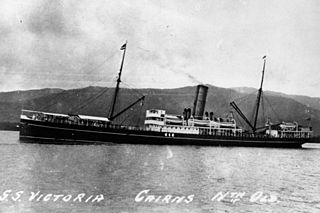
Victoria was a steam ship built in 1902 by the Fairfield Shipbuilding & Engineering Company of Govan. She was employed by the Pacific Steam Navigation Company on their routes along the West coast of South America, from Valparaiso to Callao.
City of Lowell was a twin screw passenger steamer launched on 21 November 1893 by Bath Iron Works and delivered in July 1894 for the Norwich & New York Transportation Company for use on Long Island Sound. The Norwich Line, operated by the New York and New England Railroad, placed the steamer on the overnight service between New York and New London, Connecticut. Passengers connected by rail at New London for Boston and Worcester, Massachusetts. The ship was in commercial operation until 1939 when apparently laid up awaiting scrapping. At the outbreak of World War II City of Lowell was acquired by the War Shipping Administration with eventual transfer of title to the War Department for use as an Army troop transport. The ship was sold to Potomac Shipwrecking Company of Washington, D.C. in November 1946 for scrapping.

Robert Logan was a Scottish naval architect. He was a university graduate of mathematics, science, and engineering. Logan designed and constructed several large ships for various shipbuilding firms worldwide. His first ones were passenger cruise excursion boats and later constructed freighter ships for the American Shipbuilding Company that carried railroad trains across Lake Michigan. He designed the world's first steel train ferry, followed by several more Logan boats that ultimately developed into the world's largest carferry fleet that operated out of Ludington, Michigan.
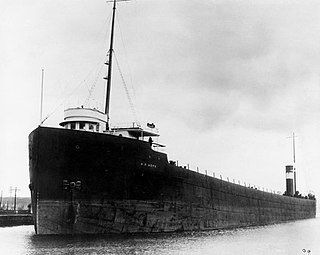
The H.P. Bope was an American steel-hulled, propeller-driven Great Lakes freighter built in 1907 by the Superior Shipbuilding Company of Superior, Wisconsin for service on the Great Lakes of North America. She was used to transport bulk cargoes such as coal, iron ore and grain.
Gjøa was a steam cargo ship built in 1906 by the J. L. Thompson & Sons of Sunderland for Harald Eie of Bergen.
Prinz Waldemar was a steam passenger-cargo ship built in 1902 by the Reiherstieg Schiffswerfte & Maschinenfabrik of Hamburg for Hamburg America Line (HAPAG). She was named after Prince Waldemar of Prussia. The ship was primarily employed as a passenger and cargo carrier between Hamburg and South America during her career.
Ocean Queen was a steam cargo ship built in 1908 by the William Gray & Co. of West Hartlepool for Jacob Christensen of Bergen. The ship was designed and built as a bulk carrier, but was wrecked on her maiden voyage.

SS John Mitchell was a steel-hulled, American lake freighter in service between 1907 and 1911. She was built in 1906 by the Great Lakes Engineering Works in St. Clair, Michigan, for the Cornell Steamship Company of Chicago, Illinois, which was managed by C.W. Elphicke. She entered service in 1907, and had a sister ship named William B. Davock. Throughout her career, John Mitchell carried iron ore and coal. On October 4, 1908, she ran aground at Indiana Harbor, Indiana, while loaded with iron ore.
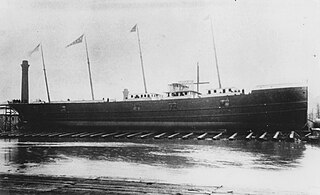
SS Cayuga was a steel-hulled American package freighter in service between 1889 and 1895. She was built in 1889 in Cleveland, Ohio by the Globe Iron Works Company for the Lehigh Valley Transit Company of Buffalo, New York. One of five identical sister ships, Cayuga entered service later in 1889, carrying package freight between Buffalo, and Chicago, Illinois, while also making stops in Milwaukee, Wisconsin and Gladstone, Michigan. Throughout her brief career, Cayuga was involved in multiple accidents and incidents.












